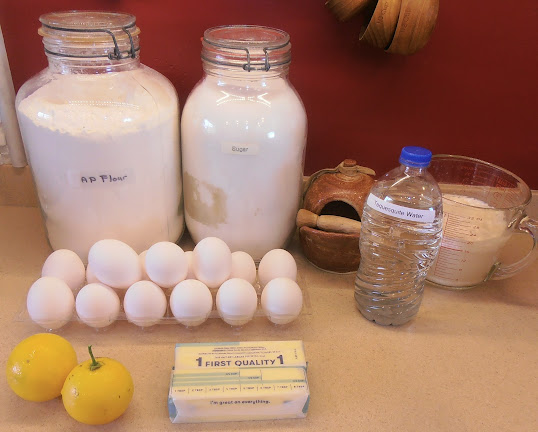One day I read an article about Edna Lewis, a woman considered to be the "Grande Dame" of Southern cooking. To see how she has inspired cooks and brought national attention to the joys of this food genre, click here to read an article by the Smithsonian magazine. She was impressive, talented, classy, and gracious. I wanted to know more about her cooking. To that end, I was given all four of her cookbooks, which I have read in the order of publication.
There are so many recipes I want to try. I was fixing a dinner for a guest taster and decided that sweet potatoes would be a good choice to go with the meal. I turned to The Gift of Southern Cooking, the last of her series, that was written with her dear friend, Scott Peacock.
 |
| ISBN 0-375-40035-4 |
On page 163 is the recipe for Cardamom-Scented Whipped Sweet Potatoes. Now keep in mind that I love sweet potatoes and I love cardamom, so putting the two together just made the recipe even more tempting.
Cardamom-Scented Whipped Sweet Potatoes
6 medium-sized sweet potatoes (about 2 1/2 pounds)
1/2 cup (1 stick) unsalted butter, at room temperature
1/3 - 1 cup heavy cream, heated
1/2 teaspoon ground cardamom
1/4 teaspoon freshly grated nutmeg
salt to taste
 |
| Let the butter come to room temperature while the potatoes are cooking. |
Preheat oven to 325 degrees F.
Put the sweet potatoes on a foil-, parchment-, or Silpat-lined baking sheet, and bake in the preheated oven for about 1 1/2 hours, until very soft and tender. Remove from the oven and cool slightly. Peel the warm potatoes, and put them in the bowl of an electric mixer. Beat the potatoes until mashed, and add the butter, 1/3 cup of the heavy cream, cardamom, nutmeg, and 1/2 teaspoon of salt. Whip until smooth and creamy - you may have to add considerably more cream. Taste carefully for seasoning, and add more salt if needed. Serve hot.
My Notes
Medium-sized sweet potatoes were not an option at my local store, so I used two large that weighed about 2 1/2 pounds total. I did not line my baking sheet. The outcome was sticky goo that leaked out of the sweet potatoes while cooking.
 |
| No worries about the puddles of goo you see here. |
However, this is not a problem for me. I've baked sweet potatoes so many times that I know I just need to soak the pan in water, and the goo will dissolve.
They were still very hot when I peeled them. I use a fork and a small knife to do this: the fork acts like my fingers to help pull the peel away from the hot insides. The knife breaks the skin and cuts the interior up into chunks.
 |
| Peeled and chunked but no burned fingers. |
Miss Lewis and Mr. Peacock note that sweet potatoes are fibrous and recommend putting them through a food mill if you want "perfectly smooth" whipped potatoes. I did not do this. I noticed that some fibers wrapped themselves around the mixer's beater, so I pulled them from the bowl and threw them away.
 |
| Beaten until mashed |
I cut the butter into chunks before adding it to the whipped potatoes. I forgot to warm the cream, but the potatoes were so hot (steaming vigorously when being whipped) that it didn't seem to be a problem. I used just 1/3 cup cream. My butter was salted, so I used 1/4 teaspoon salt instead of 1/2 teaspoon.
 |
| Whipped until smooth |
After the second whipping, I tasted it and deemed it "just right." It was smooth enough, and the salt was enhancing the sweet without being salty. The mixture went into a serving bowl, and I used a spoon to smooth and swirl the surface.
 |
| Ready to serve |
The Verdict
It was lovely. The sweet potatoes were not too sweet but just enough so to tickle my taste buds. They were creamy and felt good on the tongue. The cardamom was more of a sensation in my nose than a taste, which I loved. I think the nutmeg was a background flavor, as it didn't come through as "nutmeg" but when I focused on it, I could taste it. It was a good support for the cardamom.
My guest tasters thought what they saw was regular whipped potatoes and were surprised that they were sweet potatoes. I had purchased the lighter-colored variety instead of the bold, orange type. They agreed on my assessment of the flavors, describing the result as "fantastic" and "really good." They particularly liked how creamy it was.
Success!
I was not surprised that it was good, and appreciated that it was fantastic. I served it with roasted turkey, stuffing, and a cucumber salad. And white wine! It was a good dinner.
Extra: Reheating the leftovers seemed to taste even better.




















































